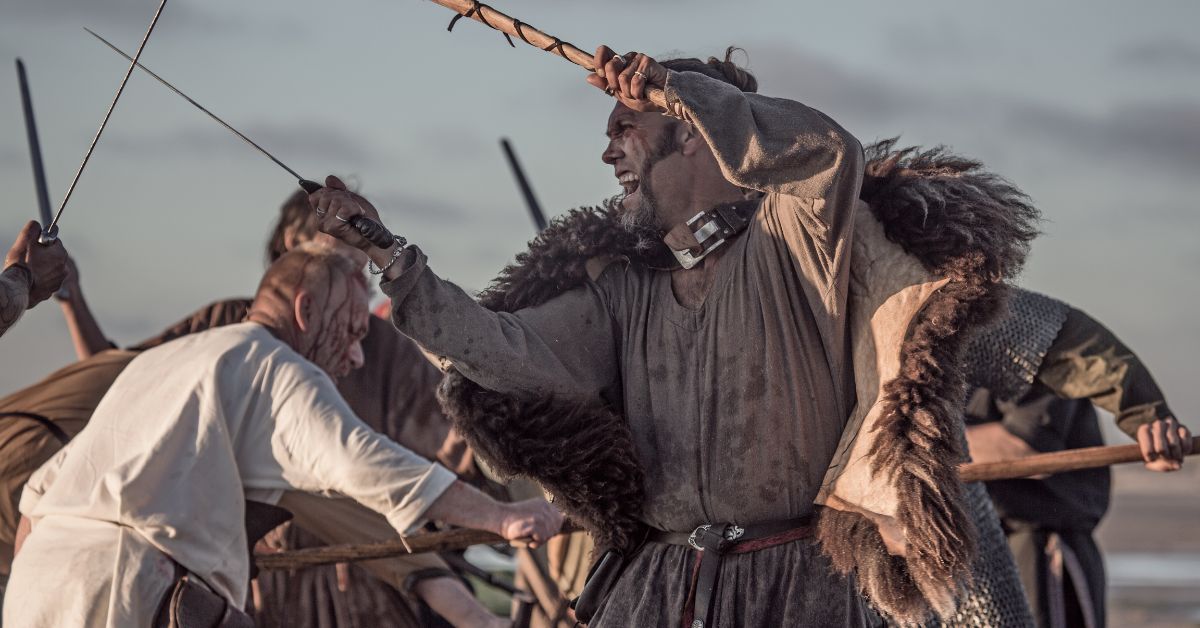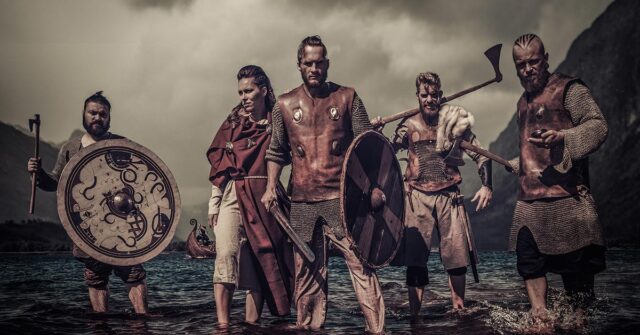The Viking Age marked a period of extensive Norse expansion, characterized by daring raids and strategic invasions.
This era, spanning from the late 8th to the early 11th century, saw Vikings venturing far from their Scandinavian homelands to raid, trade, and settle across Europe and beyond.
Their invasions were not merely random acts of violence but were driven by a combination of economic, political, and social motives, leaving a lasting impact on the regions they touched.
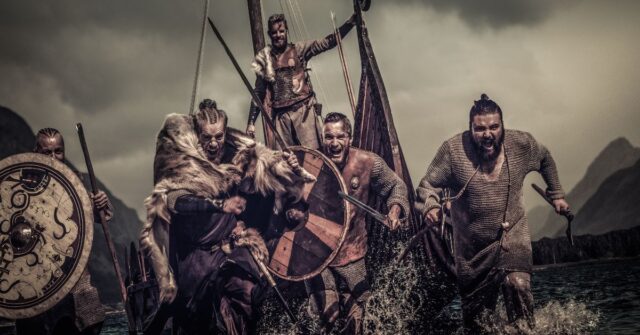
Introduction
Viking invasions were a formidable force in medieval history, shaping the destinies of many European nations.
Understanding the reasons behind their raids and the strategies they employed offers valuable insights into how these Norse warriors managed to create a legacy that still fascinates historians and enthusiasts today.
This article delves into the key aspects of Viking invasions, focusing on their targets, tactics, and the broader implications of their actions.
The Rise of the Viking Age
The Viking Age, spanning from the late 8th to the early 11th century, was a period marked by Norse expansion and exploration.
Originating from Scandinavia, Vikings ventured far beyond their homelands, driven by a combination of economic, political, and social factors.
Their raids and invasions left an indelible mark on European history, altering the course of many nations and cultures.
The Significance of Viking Invasions
Viking invasions were significant for their impact on the political and cultural landscapes of medieval Europe.
These invasions not only led to the establishment of Viking settlements in various regions but also influenced local customs, trade, and warfare.
Understanding the targets and tactics of these invasions provides insight into how the Vikings achieved their far-reaching influence and sustained their formidable reputation.
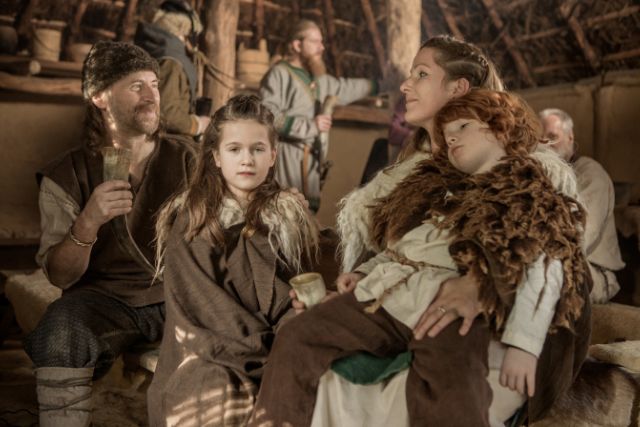
Viking Longships: The Key to Success
Viking longships were central to their success in both raids and explorations.
These vessels, renowned for their speed and agility, allowed Vikings to travel vast distances and navigate both open seas and shallow rivers.
The innovative design of these ships enabled Vikings to conduct surprise attacks and retreat swiftly, a tactical advantage that played a crucial role in their numerous victories and successful raids.
Design and Construction of Longships
Viking longships were a marvel of naval engineering, designed for both speed and versatility.
Constructed primarily from oak, these ships featured a shallow draft that allowed them to navigate rivers and coastal waters with ease.
The symmetrical bow and stern enabled quick reversals, an essential feature for surprise attacks and rapid retreats.
Advantages of Longships in Viking Raids
The design of the longship was crucial to the success of Viking raids. Their shallow draft meant they could land on beaches or sail up rivers that larger ships couldn’t reach.
This capability allowed Vikings to strike deep into the heart of Europe, attacking unsuspecting towns and monasteries, and then retreating swiftly before local defenses could be organized.
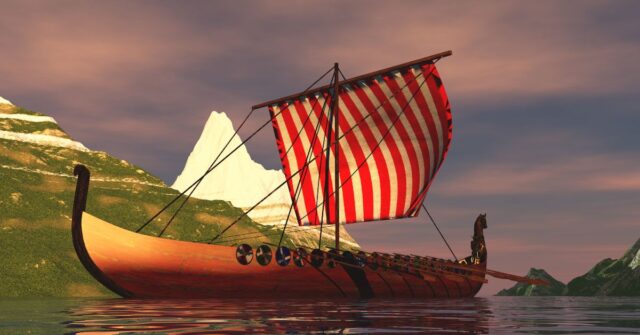
Targets of Viking Raids
The Vikings were strategic in their choice of targets, often focusing on locations that promised rich rewards with minimal resistance.
Their raids on monasteries, trading centers, and politically unstable regions were calculated moves aimed at maximizing plunder and exploiting weaknesses.
By understanding the nature of their targets, we can better appreciate the tactical acumen that underpinned Viking raids.
Monasteries and Religious Sites
Monasteries were prime targets for Viking raids due to their wealth and lack of defenses. The attack on Lindisfarne in 793 CE is one of the most famous examples.
These religious sites often held considerable treasures, including gold, silver, and valuable manuscripts, making them irresistible to Viking raiders.
Trading Centers and Coastal Towns
Coastal towns and trading centers were also frequent targets. Places like the trading center of Dorestad were repeatedly attacked for their goods and strategic importance.
The Vikings’ knowledge of trade routes and their ability to navigate both open sea and inland waterways allowed them to exploit these lucrative targets effectively.
Exploiting Political Turmoil
The Vikings were adept at taking advantage of political instability.
During periods of internal conflict, such as the civil wars following the death of Emperor Louis the Pious, Vikings could strike weakened regions with little resistance.
Their raids often coincided with times of political upheaval, ensuring minimal organized opposition.
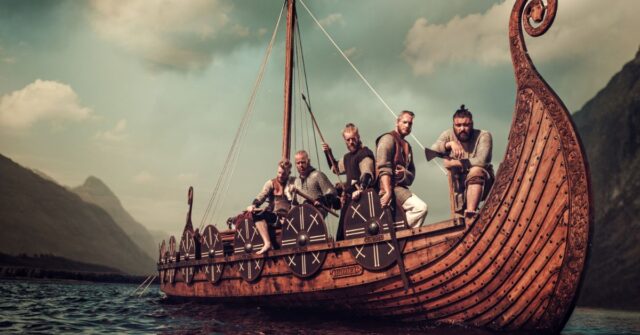
Case Studies: Lindisfarne, Nantes, and Paris
In addition to Lindisfarne, the sack of Nantes in 843 CE and the siege of Paris in 885-886 CE are notable examples of Viking raids.
Nantes was targeted during a festival when the town was crowded and unprotected, showcasing the Vikings’ strategic timing.
The prolonged siege of Paris demonstrated their ability to conduct large-scale operations and employ siege tactics effectively.
Combat Tactics and Military Organization
The Vikings were not just fierce warriors but also adept tacticians.
Their military strategies included the use of the shield-wall formation, the psychological impact of berserkers, and the effective deployment of archery and siege engines.
The organization of Viking forces, from small warbands to large armies led by kings, reflected a flexible yet disciplined approach to warfare that allowed them to adapt to various combat scenarios and enemy defenses.
The Shield-Wall Formation
One of the most iconic Viking tactics was the shield-wall, or “skjaldborg.” In this formation, warriors stood side by side, their shields overlapping to create a formidable barrier.
This tactic was used both defensively and offensively, allowing Vikings to hold their ground against enemy attacks and push forward to break enemy lines.
Berserkers: The Fearsome Warriors
Berserkers were legendary Viking warriors who fought with frenzied ferocity. Often described in sagas as feeling no pain and showing no fear, berserkers were a terrifying presence on the battlefield.
Their wild and unpredictable fighting style could demoralize and intimidate even the most steadfast opponents.
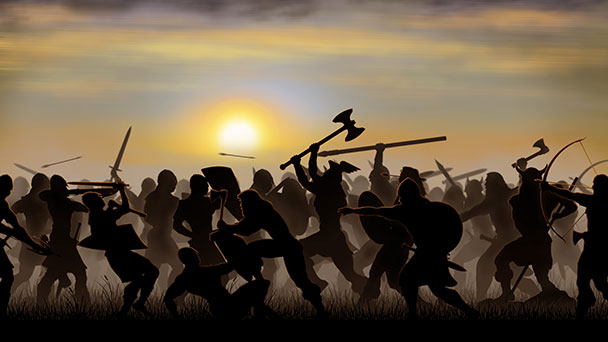
Use of Archery and Siege Engines
Archery played a significant role in Viking warfare, with longbows used to disrupt enemy formations before close combat ensued.
Vikings also employed siege engines like catapults and battering rams, particularly during prolonged assaults on fortified positions, such as the siege of Paris.
Command Structure and Warbands
The Viking military organization was flexible, with warbands led by local chieftains or kings.
These warbands could quickly assemble for raids and disband just as rapidly, allowing for efficient and adaptable operations.
Larger campaigns, like those led by kings such as Sweyn Forkbeard, featured more structured hierarchies, enabling the coordination of large-scale invasions.
Psychological Warfare
Psychological warfare was a key component of Viking tactics. Their fearsome reputation often preceded them, causing panic and leading to swift surrenders.
The psychological impact of their raids, combined with their strategic use of surprise attacks, helped Vikings maintain an aura of invincibility and terror that significantly contributed to their success on the battlefield.
The Impact of Viking Reputation
The fearsome reputation of the Vikings often preceded them, causing panic and surrender among their targets.
Stories of their brutality and relentless attacks spread quickly, contributing to their psychological warfare.
This reputation was a powerful tool, often leading to towns and monasteries capitulating without a fight to avoid Viking wrath.
Intimidation and Surprise Tactics
Vikings relied heavily on the element of surprise. Their swift, unexpected attacks left little time for organized defense.
This tactic was not only effective in terms of physical conquest but also in spreading fear. The sudden appearance of Viking ships on the horizon was enough to send many into a state of panic.
From Raiders to Settlers
As time passed, many Viking groups transitioned from raiding to establishing permanent settlements.
This shift not only altered the demographic and cultural landscapes of the regions they settled in but also facilitated the integration of Viking and local cultures.
The establishment of settlements like those in the Danelaw and Ireland marked a new phase in Viking expansion, characterized by trade, cultural exchange, and political influence.
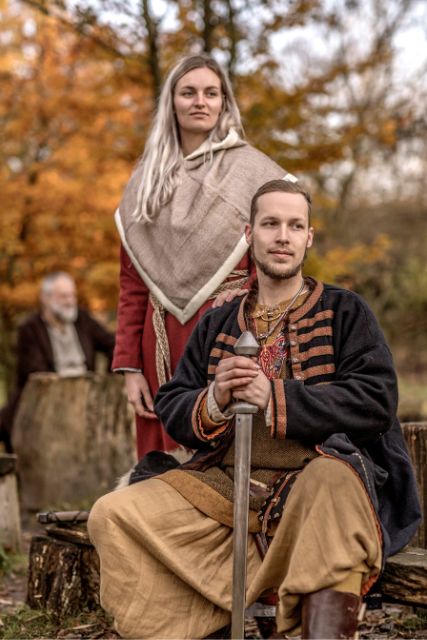
Establishing Settlements in England and Ireland
Over time, some Viking groups transitioned from raiding to settling. In England, they established the Danelaw, a region under Viking control.
In Ireland, they founded key trading towns such as Dublin, which became central hubs for commerce and culture. These settlements facilitated further raids and expanded Viking influence.
The Danelaw: Viking Control in England
The Danelaw represented a significant shift from temporary raids to permanent control.
Established after the conquest of East Anglia, Northumbria, and parts of Mercia, the Danelaw saw Vikings integrate with local populations, adopting aspects of Anglo-Saxon culture while influencing it with their own traditions.
Long-term Effects on European Regions
The long-term effects of Viking settlements were profound. They introduced new trade routes, technologies, and cultural practices.
The blending of Norse and local traditions led to a rich cultural tapestry that would influence European development for centuries.
The legacy of the Vikings can still be seen in place names, languages, and cultural traditions across Europe.
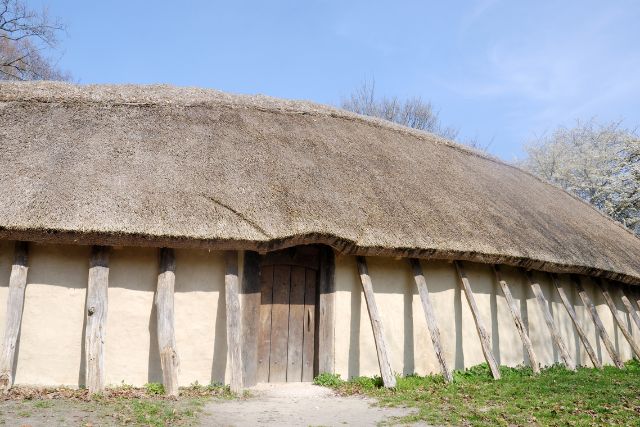
Conclusion
The legacy of Viking invasions is profound, influencing the historical trajectory of numerous European regions.
Their tactics, from the design of their ships to their psychological strategies, showcase a sophisticated approach to warfare that went beyond mere brute force.
The Viking Age remains a testament to the ingenuity, adaptability, and enduring impact of these Norse warriors. By studying their invasions, we gain a deeper understanding of a pivotal era in medieval history.
The Enduring Legacy of Viking Tactics
Viking tactics, from their innovative ship designs to their psychological warfare, have left a lasting legacy.
Their ability to adapt and innovate in both maritime and land-based combat set them apart from many of their contemporaries. This legacy continues to be studied and admired in military history.
The Historical Impact of Viking Invasions
The historical impact of Viking invasions is undeniable.
They reshaped the political and cultural landscapes of Europe, establishing new trade routes and influencing the development of the regions they touched.
The Viking Age remains a fascinating period of history, marked by both its brutality and its contributions to the evolution of European civilization.

